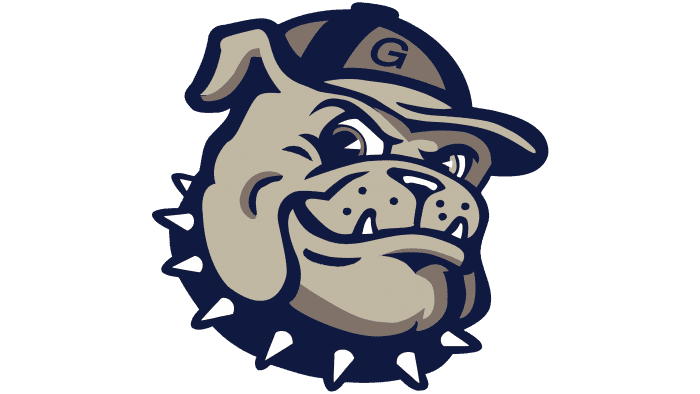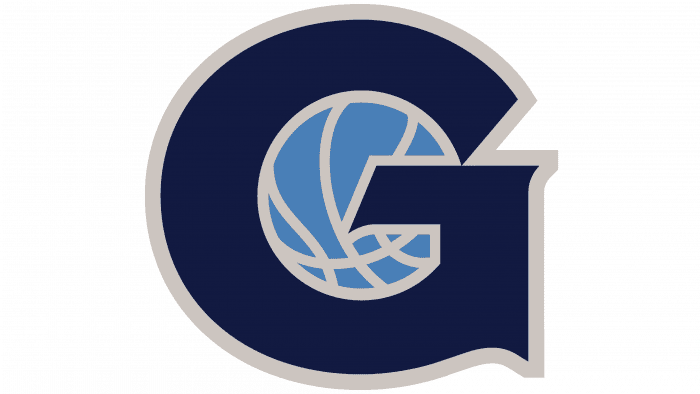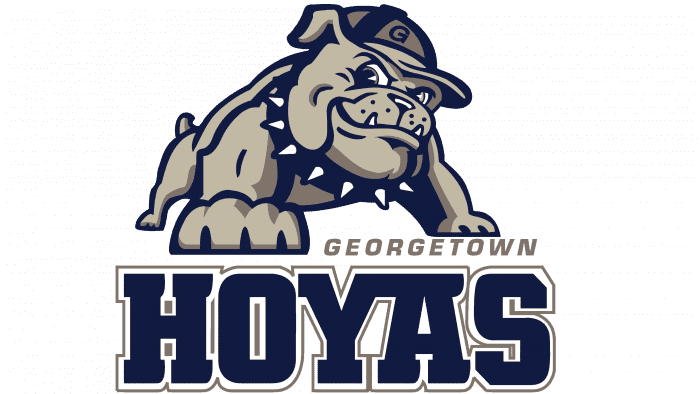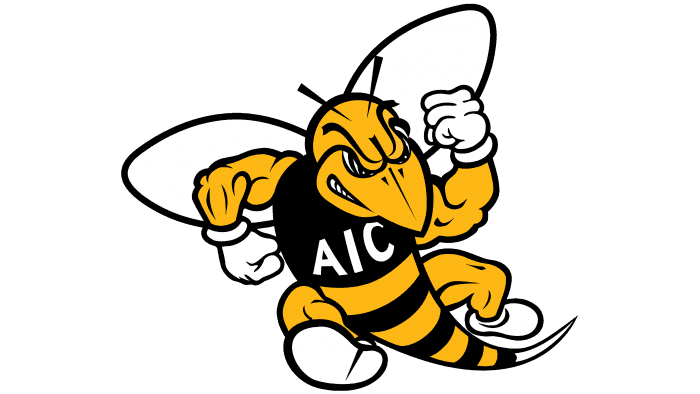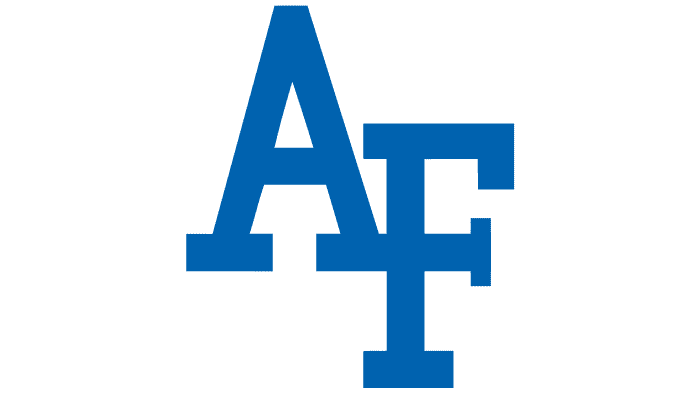Georgetown University athletes are distinguished by a modern and concise style, which emphasizes their club affiliation and club colors, making the Georgetown Hoyas logo recognizable and memorable.
Georgetown Hoyas: Brand overview
| Founded: | 1978 |
| Headquarters: | Washington, D.C., U.S. |
| Website: | guhoyas.com |
More than twenty Georgetown Hoyas teams represent Georgetown University in NCAA Division I. They participate in the Big East Conference and other sports associations such as MAISA, EARC, and Patriot League. The most popular program is football, although other sports are also widely represented.
The name Hoyas originates from the phrase “Hoya Saxa,” which is the official greeting of university students. The first word is found in biblical texts and means “what” or “such,” while the second translates from Latin as “stones.” The use of the nickname Hoyas in teams began in the 1920s.
Meaning and History
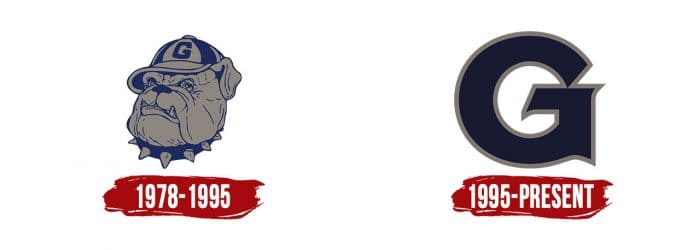
The exact origin of the name Georgetown Hoyas is unknown, as its history dates back to the 1890s. Rumor has it that it was formed from the official greeting “Hoya Saxa!” which translates from Latin as “What stones!”. Equally, the phrase may refer to the wall around the campus, the nickname “Stonewalls,” or the incredible resilience of football players. However, the university team’s mascot has nothing to do with the word “Hoya.” Their main symbol is Jack the Bulldog. He was depicted on the old athletes’ logo: a stylized dog’s head in a cap with the letter “G” was a key element of the Georgetown Hoyas identity for several years.
Over time, the letter “G” gained the right to exist independently. It began to be used as a full-fledged emblem, separate from the mascot’s image. Its pointed edges resemble the teeth of a predator, and the rounded curve creates a deceptive sense of security. That is, the associative hint of the bulldog remains, but it is difficult to notice.
What is Georgetown Hoyas?
Georgetown Hoyas is the sports department of Georgetown University. It represents the university in intercollegiate competitions, participating in NCAA Division I as a member of the Big East Conference. The football team also competes in the Patriot League FCS in Division I. In total, the university has 23 student teams, the most famous of which is basketball. There are also representatives in CSA (women’s squash), MAISA (sailing), and EARC (rowing).
1978 – 1995
The 1978-1995 emblem embodies Jack the Bulldog mascot. Following tradition, artists depicted a fierce dog with a spiked collar on the emblem. However, not entirely, but only the head. The right ear is covered by a striped baseball cap with the letter “G.” The color palette is in dark shades of gray and blue. This combination was first used for the visual identification of Georgetown University teams in 1876.
1995 – today
The new sports logo, introduced in 1995, retained the classic colors. Only the graphic component changed: now, instead of the bulldog’s head, the emblem features the letter “G” – probably the same one that was on the dog’s baseball cap. It differs only in the font: this time, the two sides of “G” are closed, forming an incomplete circle.
The creation of the men’s basketball team dates back to 1907 and the women’s to 1970. The men’s basketball team has participated in thirty NCAA tournaments and reached the final five times. It has also participated in six National Invitation Tournaments. The women’s team has four NCAA tournaments and five NITs under its belt.
The football team appeared in 1874. In the 1940s, it was recognized as one of the best among similar sports programs but was closed in 1951 due to significant losses. In 1964, students were allowed to play club football. Only in 1970 did the team regain university status and began representing Georgetown University in the NCAA.
Georgetown Hoyas: Interesting Facts
The Georgetown Hoyas are the sports teams for Georgetown University in Washington, D.C. They play in the NCAA Division I and are part of the Big East Conference for most sports.
- Why They’re Called Hoyas: Long ago, students called the teams “Hoya Saxa,” meaning “What Rocks” in Greek and Latin. This was because of the campus’s rocky terrain and the strength of the athletes. Over time, the teams were just called “Hoyas.”
- Basketball: The men’s basketball team is good. They won the national championship in 1984 with Coach John Thompson Jr. They’ve had famous players like Patrick Ewing and Allen Iverson.
- Mascot: Their mascot is a bulldog named Jack. He goes to games and university events. Everyone loves him because he shows how tough Georgetown athletes are.
- Soccer: The men’s soccer team won the national championship in 2019, which shows their ability in other sports, not just basketball.
- Women’s Basketball: Georgetown’s women’s basketball team has attended the NCAA tournament many times, proving that both men’s and women’s teams are strong.
- Rowing: They have great rowing teams for both men and women. Rowing is all about working together and being strong, just like what Georgetown sports stand for.
- Track and Field: They’ve had Olympians and national champions in track and field, showing they’re good in individual sports, too.
- Rivalries: They have a big rivalry with Syracuse University, especially in basketball. It makes the games exciting.
- Helping the Community: Hoyas athletes do a lot of community service. It’s part of the school’s belief in helping others and community involvement.
So, the Georgetown Hoyas are known for being strong in sports, having a cool bulldog mascot, and helping out in the community. They’re about being tough, working together, and doing good things.
Font and Colors
Georgetown Hoyas has an official font, Adobe Caslon. However, the creators of the sports team’s emblem used a distinctive style: they drew a unique letter, “G,” with unusual angles and protrusions.
Regarding the emblem’s palette, it fully corresponds to the university tradition. It is based on two colors:
- Gray (Pantone 409);
- Dark blue (Pantone 282).
They began to be used in 1876 at the initiative of the rowing team, who considered such a combination of shades ideal for a boat club. The combination of gray and blue has passed through the centuries and adorns the modern logos of the Georgetown Hoyas.
Georgetown Hoyas color codes
| Space Cadet | Hex color: | #011e41 |
|---|---|---|
| RGB: | 1 30 65 | |
| CMYK: | 98 54 0 75 | |
| Pantone: | PMS 2768 C |
| Pale Silver | Hex color: | #c6bcb6 |
|---|---|---|
| RGB: | 198 188 182 | |
| CMYK: | 0 5 8 22 | |
| Pantone: | PMS 406 C |



